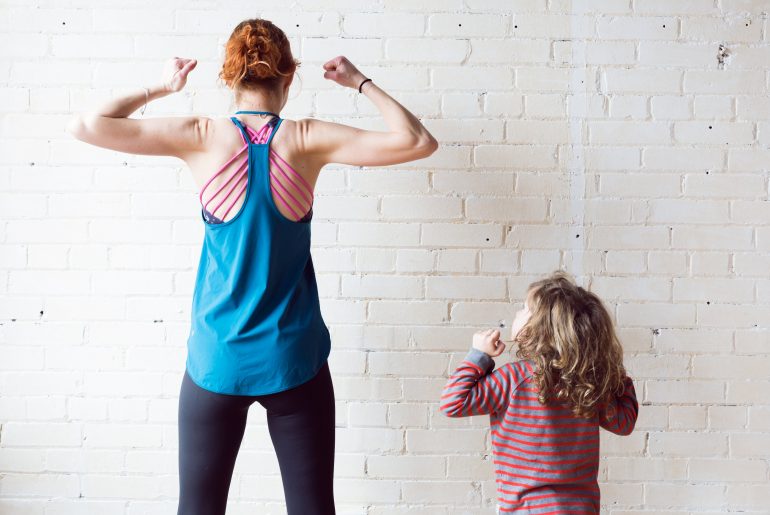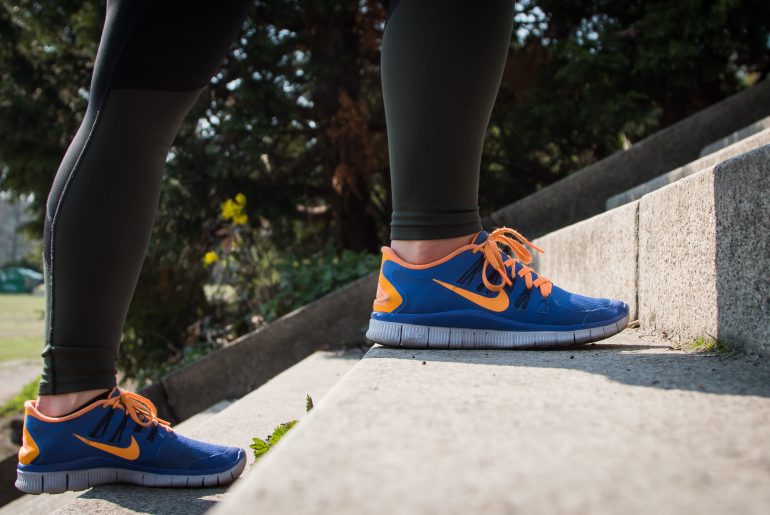With social distancing regulations in place and gyms forced to close you are likely finding yourself adjusting to life indoors. But just because you may not be able to do your usual forms of exercise, it doesn’t mean you should stop altogether. Exercise not only has multiple benefits to your physical health but it is also a great stress- reliever. Continuing to maintain some sort of a routine is so important in times likes these where we can feel more stress than usual. We’ve put together a selection of online exercise platforms with on demand fitness content who provide free access to workouts you can do at home that cover a whole range of exercise styles. You can access the content via a smartphone app, YouTube or live streams on social media and you don’t necessarily need any equipment. All you need to do is find a space and get started. The best thing is no one is watching! Just as you schedule your diary to organise your workload and meetings, you should find time to exercise. Treat exercise with the same priority as a phone call with a client. Blocking out time away from your desk means that you…
It is a marathon – not a sprint: perspectives from quarantine
This personal post is written by guest blogger Meg Grealy – who speaks of her experience of returning from overseas and into quarantine. Had you asked me in January, or even the beginning of March, what my April days were looking like they would sound achievable, nothing too extreme, just the routine of a twenty-something who had just moved to the UK on a working visa. I would have said a morning run (so I could make it across the finish line of the 10k I’d signed up to run on May 3rd) a 3-day work week, and an exploratory beer in various pubs across my new city. In hindsight, the only thing I managed to get right is the daily run (although it’s purpose is now to harness endorphins for the day). And yet the daily run is maybe the only thing that has kept me sane and allowed me to stay present in a period where everything is confusing. It seems the only effective strategy of taking control is to muddle through conflicting emotions and anxiety-inducing news cycles. As we started this year during a bushfire crisis, I feel as if there has been a delay in…
Surprising Data on the Cost of Sitting in the UK
Get Britain Standing’s page on costs of prolonged sitting for the employer has some surprising facts. The page breaks these down into three categories absenteeism, presenteeism, and costs to engagement and wellbeing. What is presenteeism you may ask? I’m sure we’ve all felt it before. I can recall showing up to work feeling “out of it.” Even when employees are present the tolls of prolonged sitting can impact the quality and quantity of work. Absenteeism is easier to quantify. Average sized employers (250 persons) loose an estimated 4800 GBP/week due to absences with all businesses forgoing a total of 15 billion GBP annually. Of this 1/3rd (5 billion GBP) is due to low back pain, an ailment directly related to sedentary behaviour. The financial boon of wellness programs in part accounts for their eager adoption overseas and here in Australia. Trades Union Congress (TUC) of Britain estimates that wellness programs can reduce absences by as much as 42%. Reorienting the workplace to support dynamic movement with sit-stand desks, walking meetings, and active breaks may seem daunting to employers but resources like Get Britain Standing and Australia’s own BeUpstanding have the tools to get your workplace started. This article was written…
Get the Commonwealth Standing
I was perusing the British movement blog Get Britain Standing when I came across their solutions page. Get Britain Standing is a resource for employers much like Australia’s BeUpstanding, which focuses on a healthier Britain by reducing the prolonged hours of sitting that accompany many jobs. Their upcoming nationwide event On Your Feet Britain is set for April 24th 2020 with a reported ~2 million office workers participating. Get Britain Standing accounts that Briton’s working hours contribute ~70% of the daily sedentary health burden. Dr. Stuart Biddle, a professor of Active Living and Public Health is quoted on their website acknowledging the growing body of evidence that to be healthy we must move dynamically throughout the day. Which leads me to what excited me about their Solutions page: the balance board section! The benefit being, as long as you don’t fall off, strengthening your balance and your core muscles at your standing desk. They come in a variety of styles from the simple sea-saw, the log roll, and even the expert level half dome or as I like to call it the danger dome! (see image) Maybe don’t tell HR about the nickname when you bring one to the office.…
The Goldilocks Zone for Movement
It takes no large leap of the imagination to see that the human body was not shaped for a life in an office chair, car, or couch. Our ancestors were habitual movers constantly engaging in mild to moderate exercise. That is all well and good you may say, but as westerners with lives dominated by sedentary behaviour exercise must be supplemented back into our lives. A recent meta-analysis on movement lays out guidelines for a “Goldilocks” zone of exercise for maximal health benefits. This approach bestows maximal benefit with as little as 50 minutes per week (equivalent to running just 5-6 miles). The study emphasised diminishing returns from daily high aerobic exercise in favour of more frequent low to moderate exercise such as walking or yoga. The study references of cohort of daily endurance athletes over the age of 45 who were measured to have an increased risk for cardiovascular events as compared to those with a more moderate activity profile. Key Take Aways: Sitting should be limited to 30 minutes at a time punctuated by a “brisk” 5 minute walk Use a sit-standing desk when possible to alternate postures regularly There is no upper limit for mild to moderate…
“Sit less—move more and more often”: all physical activity is beneficial for longevity
This article was originally published in the BMJ Opinion on 21st August 2019. New research shows that any level of movement decreases risk of premature death, so get moving say Ulf Ekelund and Thomas Yates It is well established that physical activity of a moderate or vigorous intensity (such as brisk walking) is good for your health. More recently, it has also been shown that people in contemporary societies are spending the majority of their day sitting, and that this prolonged sitting is also linked to an increased risk for many chronic diseases and premature death. Current physical activity recommendations, including those recently updated for the US, suggest that at least 150 minutes per week of moderate intensity physical activity is needed to keep healthy and that prolonged sitting should be avoided. However, how much sitting is too much? This is not specified and is widely debated. In addition, are levels of physical activity below those recommended still beneficial for health and does light intensity physical activity still count? Answering these questions have huge relevance for health promotion. We performed a study to address these questions. Our results suggest strong associations between total physical activity and the risk of dying.…
An Exercise Regimen Everyone Can Squeeze In
The following article was written by Emmanuel Stamatakis and published in The Conversation on the 21st February 2019. Have you recently carried heavy shopping bags up a few flights of stairs? Or run the last 100 metres to the station to catch your train? If you have, you may have unknowingly been doing a style of exercise called high-intensity incidental physical activity. Our paper, published today in the British Journal of Sports Medicine, shows this type of regular, incidental activity that gets you huffing and puffing is likely to produce health benefits, even if you do it in 30-second bursts, spread over the day. In fact, incorporating more high intensity activity into our daily routines – whether that’s by vacuuming the carpet with vigour or walking uphill to buy your lunch – could be the key to helping all of us get some high quality exercise each day. And that includes people who are overweight and unfit. What is high intensity exercise? Until recently, most health authorities prescribed activity lasting for at least ten continuous minutes, although there was no credible scientific evidence behind this. This recommendation was recently refuted by the 2018 US Physical Activity Guidelines Advisory Report. The new…
How Much Do Sedentary People Really Need To Move? It’s Less Than You Think
The following article was originally posted by the Conversation on April 23, 2019 and was written by Emmanuel Stamatakis, Joanne Gale, and Melody Ding. People who spend much of their day sitting may need to move around less than we thought to counteract their sedentary lifestyle, new research shows. Our research, published today in the Journal of the American College of Cardiology, found about 20-40 minutes of physical activity a day seems to eliminate most health risks associated with sitting. That’s substantially lower than the one hour a day a previous study has found. We spend almost all our waking day sitting, standing, or moving. The health impact of each one of these can be complex. For example, too much standing can lead to lower back problems and even a higher risk of heart disease. But sitting for too long and not moving enough can harm our health. Then there are people who sit for many hours and also get in reasonable amounts of physical activity. For example, someone who has an office job but walks to and from work for 20 minutes each way and runs two to three times a week easily meets the recommended level of physical activity. While we know moving is better than…
Is sitting bad for us? There’s good and bad news
The following article, written by Professor David Dunstan – one of our BeUpstanding Academic team members – was originally published in The New Daily on June 25, 2018. As you read this, what are you doing right now? If you’re sitting down, scientists have some good and bad news. First, the bad news. The way most adults work has steadily changed over recent decades. While in many ways our workplaces are ‘safer’ from an occupational hazards perspective, it is now encouraged or even demanded that we spend large portions of our day sedentary (seated) – usually with our eyes glued to some type of screen. While this is now the new norm, we simply weren’t built for such a stationary existence and, unsurprisingly, accumulating scientific evidence demonstrates that exposure to high amounts of sitting significantly increases the risk of premature death, heart disease and type 2 diabetes. Yes, you can help to reduce the risks associated with too much sitting if you undertake daily exercise, but unfortunately science tells us the best estimate of the amount of exercise required is equal to about 80 to 90 minutes per day of moderate-intensity activities (such as brisk walking) or 40 to 45…









